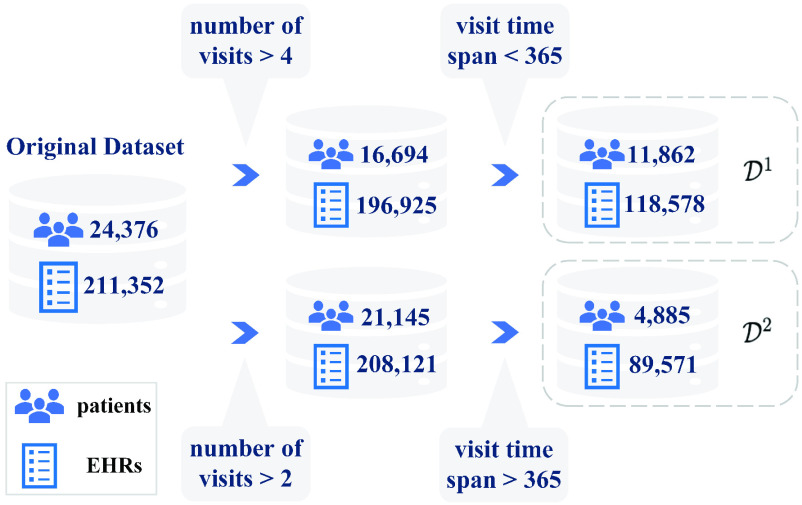Predicting Visit Cost of Obstructive Sleep Apnea Using Electronic Healthcare Records With Transformer
IF 3.7
3区 医学
Q2 ENGINEERING, BIOMEDICAL
IEEE Journal of Translational Engineering in Health and Medicine-Jtehm
Pub Date : 2023-03-17
DOI:10.1109/JTEHM.2023.3276943
引用次数: 1
Abstract
Background: Obstructive sleep apnea (OSA) is growing increasingly prevalent in many countries as obesity rises. Sufficient, effective treatment of OSA entails high social and financial costs for healthcare. Objective: For treatment purposes, predicting OSA patients’ visit expenses for the coming year is crucial. Reliable estimates enable healthcare decision-makers to perform careful fiscal management and budget well for effective distribution of resources to hospitals. The challenges created by scarcity of high-quality patient data are exacerbated by the fact that just a third of those data from OSA patients can be used to train analytics models: only OSA patients with more than 365 days of follow-up are relevant for predicting a year’s expenditures. Methods and procedures: The authors propose a translational engineering method applying two Transformer models, one for augmenting the input via data from shorter visit histories and the other predicting the costs by considering both the material thus enriched and cases with more than a year’s follow-up. This method effectively adapts state-of-the-art Transformer models to create practical cost prediction solutions that can be implemented in OSA management, potentially enhancing patient care and resource allocation. Results: The two-model solution permits putting the limited body of OSA patient data to productive use. Relative to a single-Transformer solution using only a third of the high-quality patient data, the solution with two models improved the prediction performance’s



使用带Transformer的电子医疗记录预测阻塞性睡眠呼吸暂停的就诊费用。
背景:随着肥胖的增加,阻塞性睡眠呼吸暂停(OSA)在许多国家越来越普遍。OSA的充分有效治疗需要高昂的医疗保健社会和经济成本。目的:为了治疗目的,预测OSA患者来年的就诊费用至关重要。可靠的估计使医疗保健决策者能够进行谨慎的财政管理,并做好预算,以便向医院有效分配资源。高质量患者数据稀缺带来的挑战因OSA患者的数据中只有三分之一可用于训练分析模型而加剧:只有随访时间超过365天的OSA患者才能预测一年的支出。方法和程序:作者提出了一种应用两个Transformer模型的转化工程方法,一个通过来自较短访问历史的数据来增加输入,另一个通过考虑由此丰富的材料和一年以上随访的案例来预测成本。该方法有效地调整了最先进的Transformer模型,以创建可在OSA管理中实施的实用成本预测解决方案,从而有可能增强患者护理和资源分配。结果:两种模型的解决方案允许将有限的OSA患者数据用于生产性使用。相对于仅使用三分之一高质量患者数据的单个Transformer解决方案,具有两个模型的解决方案将预测性能的[公式:见正文]从88.8%提高到97.5%。即使使用具有模型增强数据的基线模型,也大大提高了[公式:参见正文],从61.6%到81.9%。结论:该方法通过仔细挖掘与回答下一年可能支出问题没有直接关系的细节,利用大部分可用的高质量数据进行预测。临床和转化影响声明:公共卫生-缺乏高质量的源数据阻碍了医疗保健领域基于数据驱动分析的研究。本文提出了一种在医疗保健数据不足的情况下结合数据增强和预测的方法。
本文章由计算机程序翻译,如有差异,请以英文原文为准。
求助全文
约1分钟内获得全文
求助全文
来源期刊

IEEE Journal of Translational Engineering in Health and Medicine-Jtehm
Engineering-Biomedical Engineering
CiteScore
7.40
自引率
2.90%
发文量
65
审稿时长
27 weeks
期刊介绍:
The IEEE Journal of Translational Engineering in Health and Medicine is an open access product that bridges the engineering and clinical worlds, focusing on detailed descriptions of advanced technical solutions to a clinical need along with clinical results and healthcare relevance. The journal provides a platform for state-of-the-art technology directions in the interdisciplinary field of biomedical engineering, embracing engineering, life sciences and medicine. A unique aspect of the journal is its ability to foster a collaboration between physicians and engineers for presenting broad and compelling real world technological and engineering solutions that can be implemented in the interest of improving quality of patient care and treatment outcomes, thereby reducing costs and improving efficiency. The journal provides an active forum for clinical research and relevant state-of the-art technology for members of all the IEEE societies that have an interest in biomedical engineering as well as reaching out directly to physicians and the medical community through the American Medical Association (AMA) and other clinical societies. The scope of the journal includes, but is not limited, to topics on: Medical devices, healthcare delivery systems, global healthcare initiatives, and ICT based services; Technological relevance to healthcare cost reduction; Technology affecting healthcare management, decision-making, and policy; Advanced technical work that is applied to solving specific clinical needs.
 求助内容:
求助内容: 应助结果提醒方式:
应助结果提醒方式:


